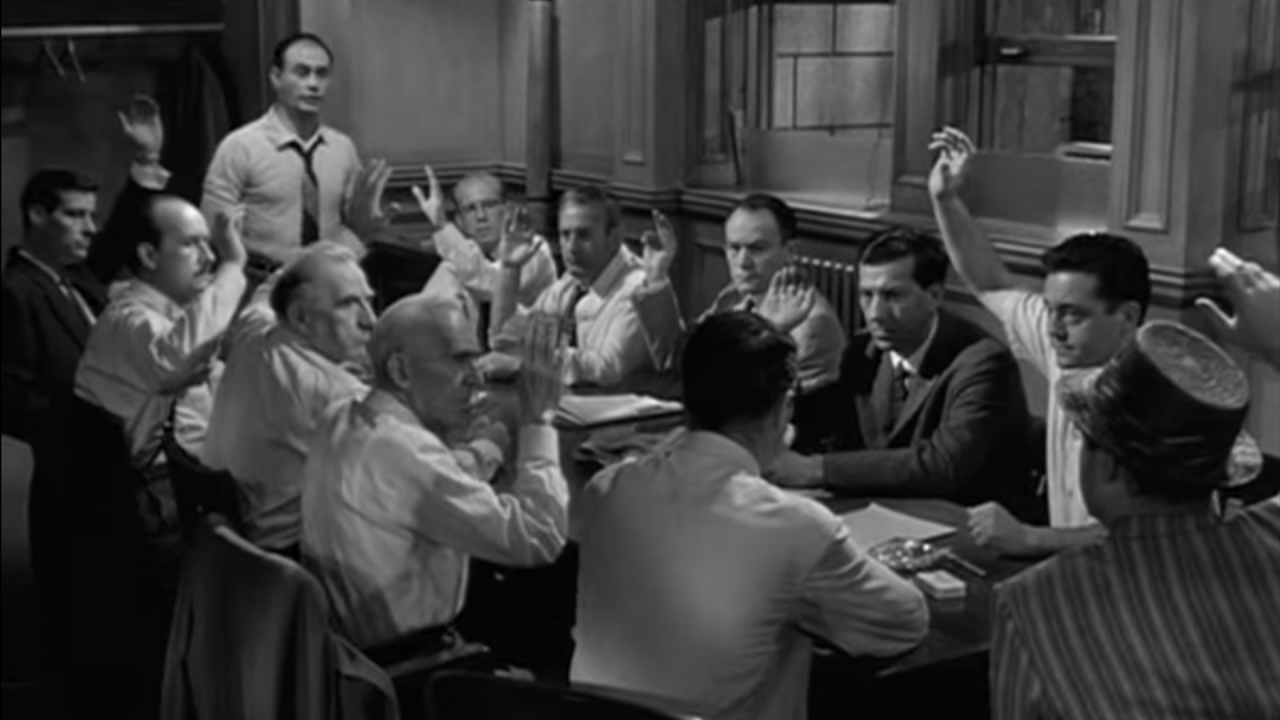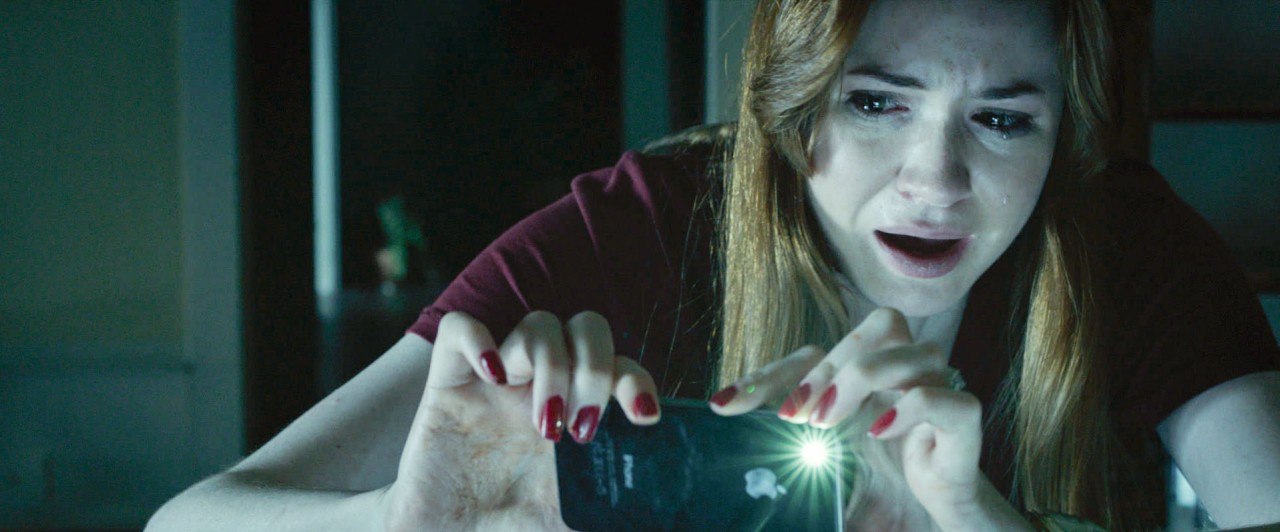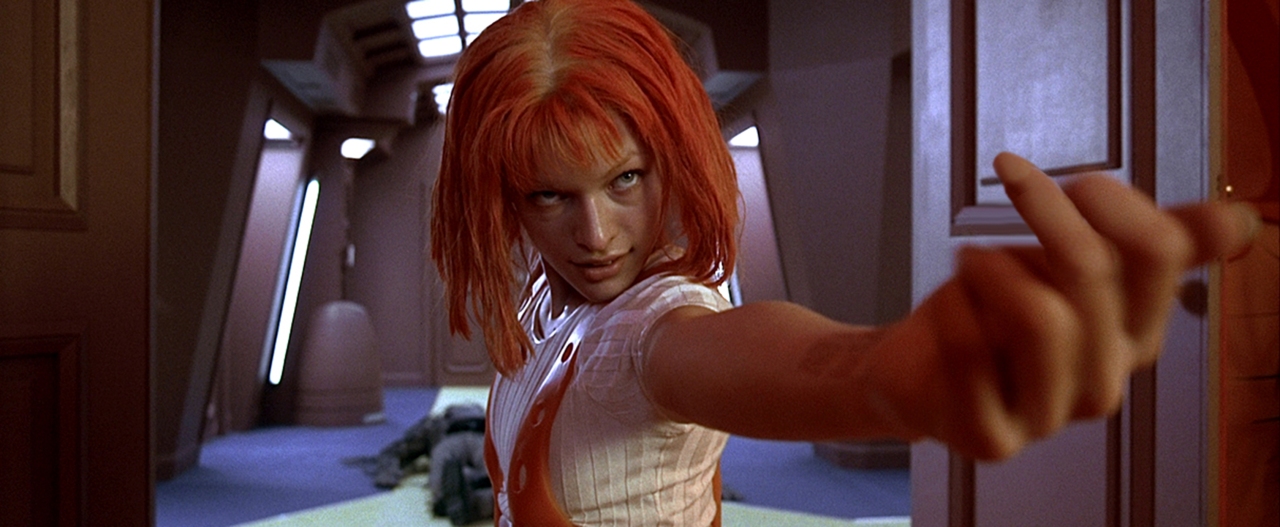In 2007, the Library of Congress added the 1957 film 12 Angry Men to the United States National Film Registry. For a film to be included in the registry is to say that the film is “culturally, historically, or aesthetically significant” and is considered a major figurehead in American film culture and history. Henry Fonda’s classic film deserves this kind of recognition for every reason imaginable.
Adapted from the teleplay of the same name by Reginald Rose, 12 Angry Men centers around a jury deliberation regarding the trial of a Hispanic 18-year-old boy accused of murder. Shall the boy be found innocent, he shall be set free. However, if the jury reaches a guilty verdict, the boy will be sentenced to death. The unnamed Jurors (in numerical order: Martin Balsam, John Fiedler, Lee J. Cobb, E.G. Marshall, Jack Klugman, Edward Binns, Jack Warden, Henry Fonda, Joseph Sweeney, Ed Begley, George Voskovec, Robert Webber) vote on a verdict, with eleven guilty votes and one not-guilty vote. The single not-guilty voter, Juror 8 (Fonda), wishes to deliberate on the boy’s fate rather than jump to a guilty verdict. The twelve jurors bicker, fight, and debate for their one hour deliberation time, slowly finding out aspects of the trial and murder that they had missed. Slowly, each juror begins to question whether this boy is as guilty as the trail made him out to be.
The main character in this film is Juror 8, since he is the instigator of the main conflict and the focus of attention for the remaining characters. There are some jurors that get more screen time and dialogue than others, but each and every character contributes to the story and moves the plot along, like good characters should. They are not plot devices, they are fully fleshed out characters—they are people! Each juror has their own personalities, quirks, and mannerisms that make them distinguishable from the other jurors. There is the timid Juror 2, the irate Juror 3, the wise and kind Juror 9, as well as many other distinct individuals with a wide range of traits and characteristics.
Watching these characters transform not just in terms of their vote, but also in terms of their character, is what drives this film. Some jurors are more dominant and aggressive than other jurors, and in some scenes there is a status change that flips the dominance power of each juror. Because of this, how jurors react or view each other changes drastically. Sometimes, this change lasts a single scene, but in other instances it changes the course of the film. My favorite shot in 12 Angry Men is when a single juror becomes absolutely furious at how the deliberation is going and goes on a long tirade. While this occurs, the other jurors stand and turn their backs to him one by one. This is one of the most powerful shots in the film, as it non-verbally shows that this particular juror is in the wrong and has lost the respect of the rest of the jury. We also observe the juror slowly begin to realize this while he experiences a multitude of emotions: first anger, then confusion, then desperation, then defeat. This reduces the juror to a sort of comatose shock that has him almost silent for the remainder of the film.
It takes great writing skill to be able to craft twelve unique and interesting characters and have each of them be memorable, important, three-dimensional, and relatable. It takes even more masterful writing to take these characters and build different intervening arcs and transformations that drive, affect, and contribute to the plot and outcome of the story. Hollywood has a hard time doing this for the movies of today. For each year in cinema, one can probably count somewhere between 3-5 wide release films that have at least three characters as well written as the characters in 12 Angry Men. Hell, most films nowadays have a hard time fleshing out ONE character.
12 Angry Men is considered a classic and a masterpiece by many, including both critics and audiences. It is very easy to see why this film deserves that title. There is hardly any fault in this film, and the faults that do exist are so minor that they are barely noticeable. It would take an entire book to discuss this film in full, including its political connotations and its commentaries on the legal system. I will discuss these aspects, in full, another day. In the meantime, I urge EVERYBODY to take a look at this film. This old black-and-white flick is captivating enough to hold the attention of past, present, and future generations. It’s not only a “must watch”, it’s a must “own”.
| 12 Angry Men | |
| Story/Plot | 10 |
| Pacing | 9 |
| Direction | 10 |
| Cinematography/Visuals | 10 |
| Editing | 9 |
| Sound Design | 9 |
| Acting | 10 |
| Theme/goal | 10 |
| Entertainment Value | 10 |
| Rewatchability | 10 |
| Final Score | 9.7 |





